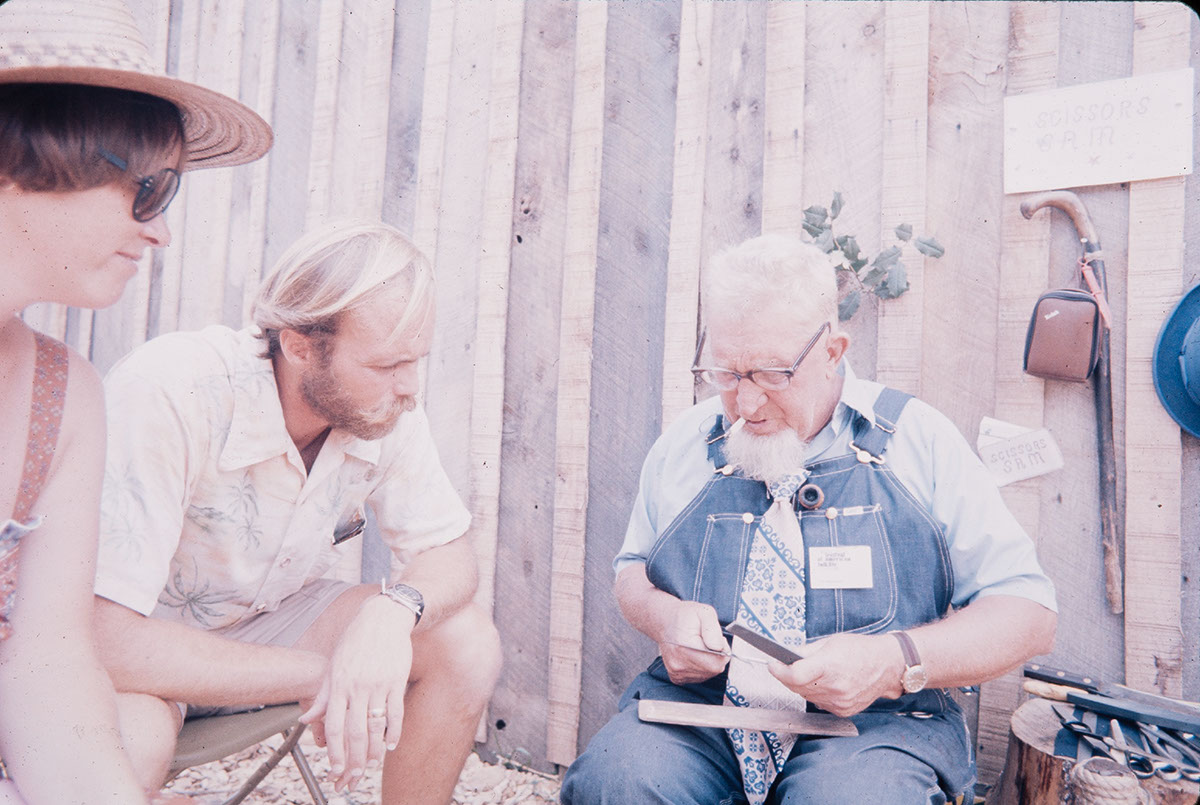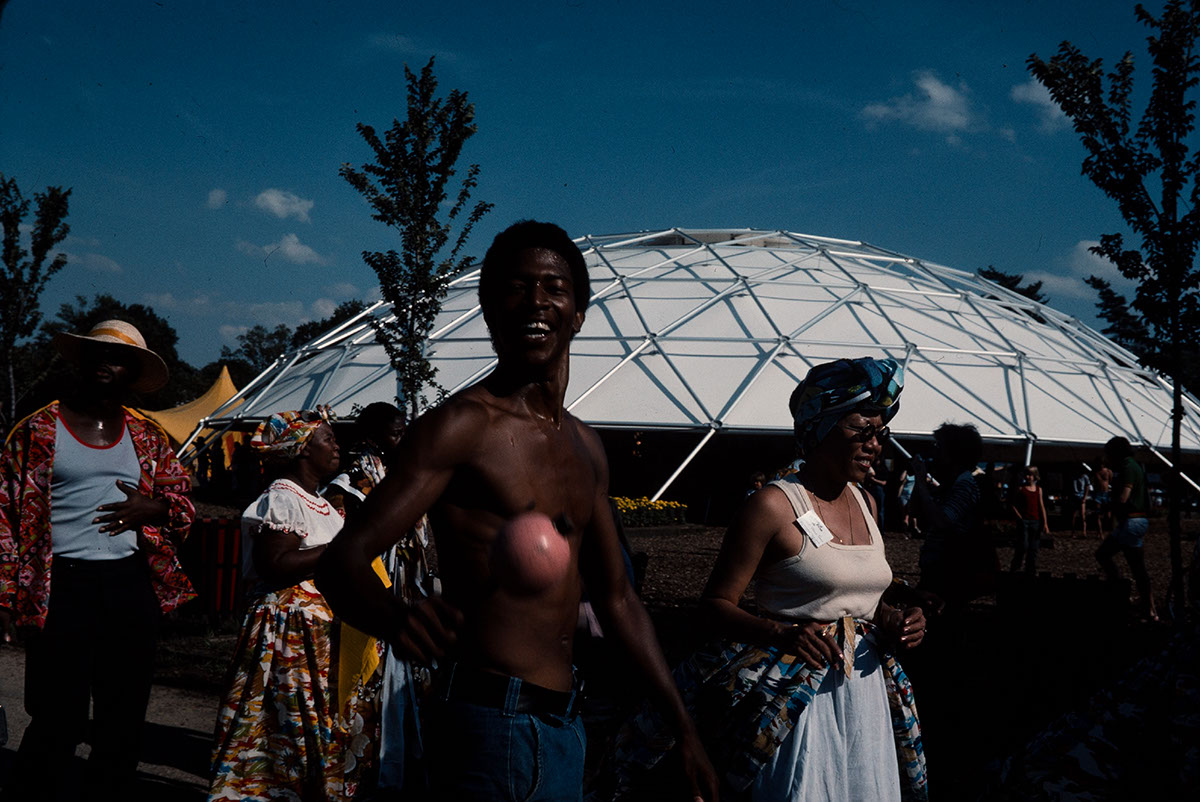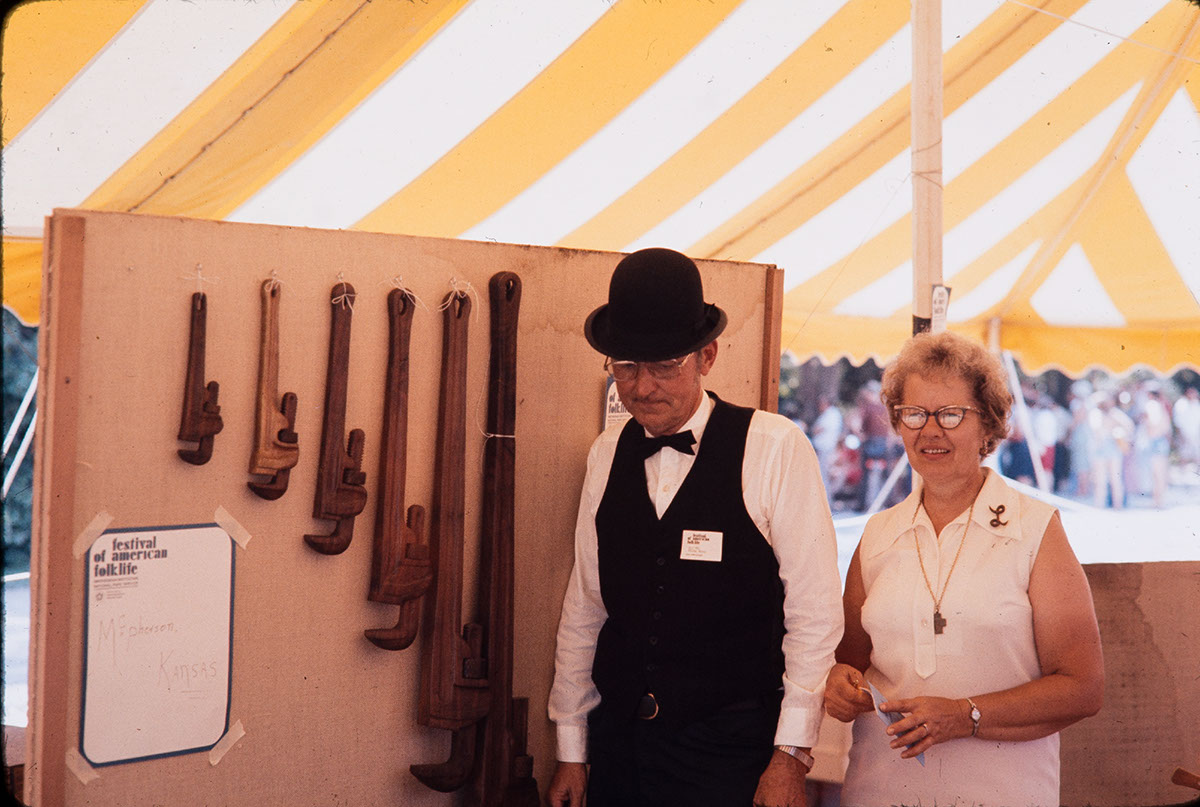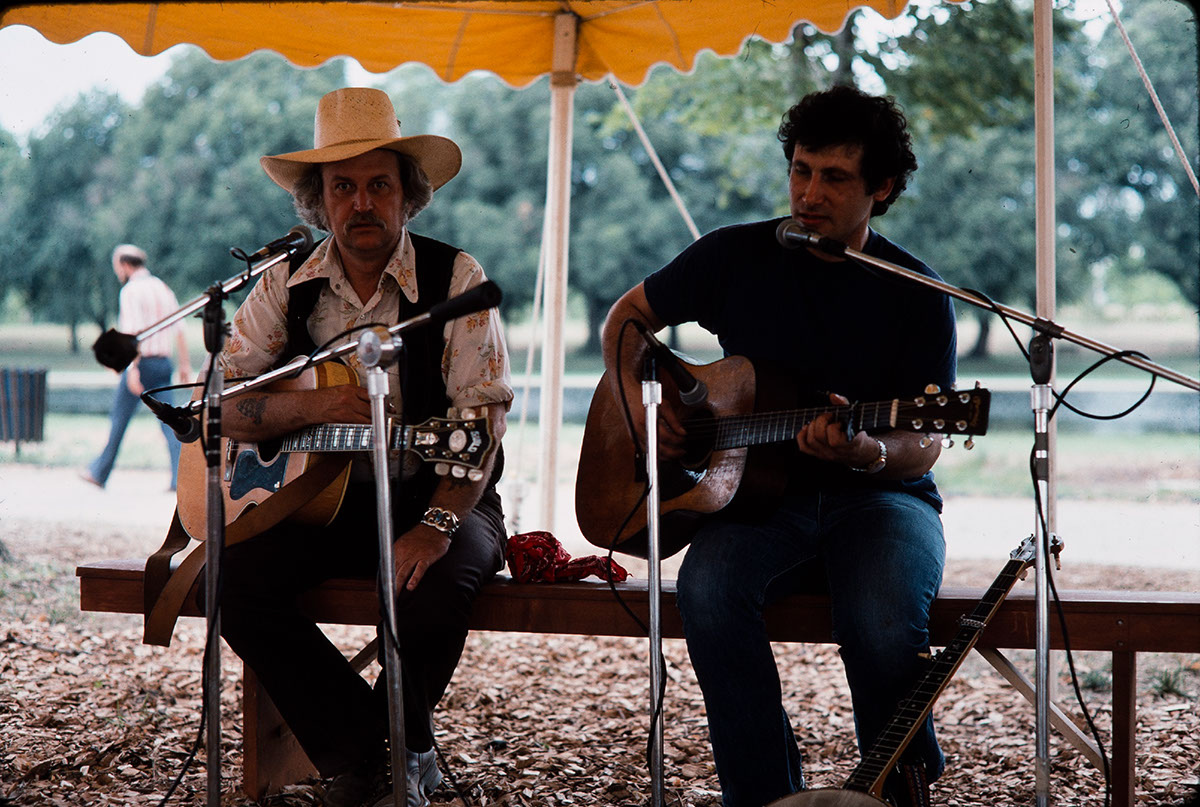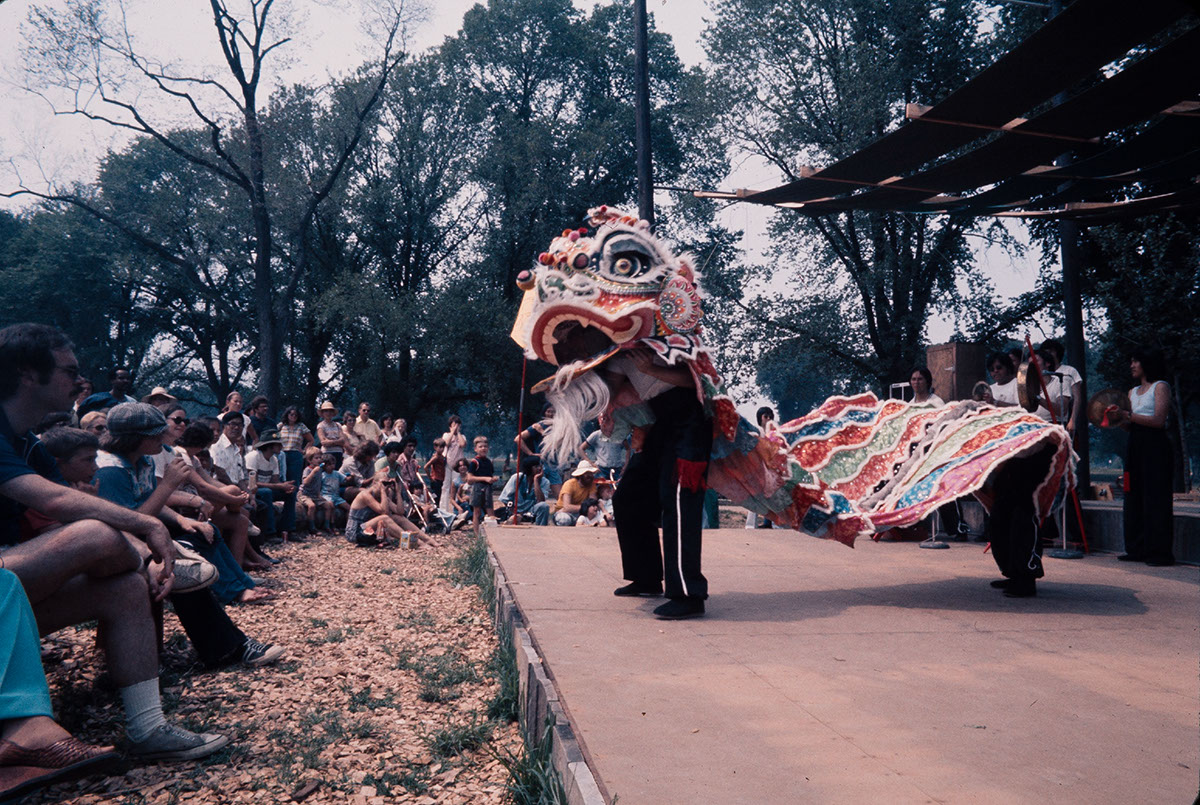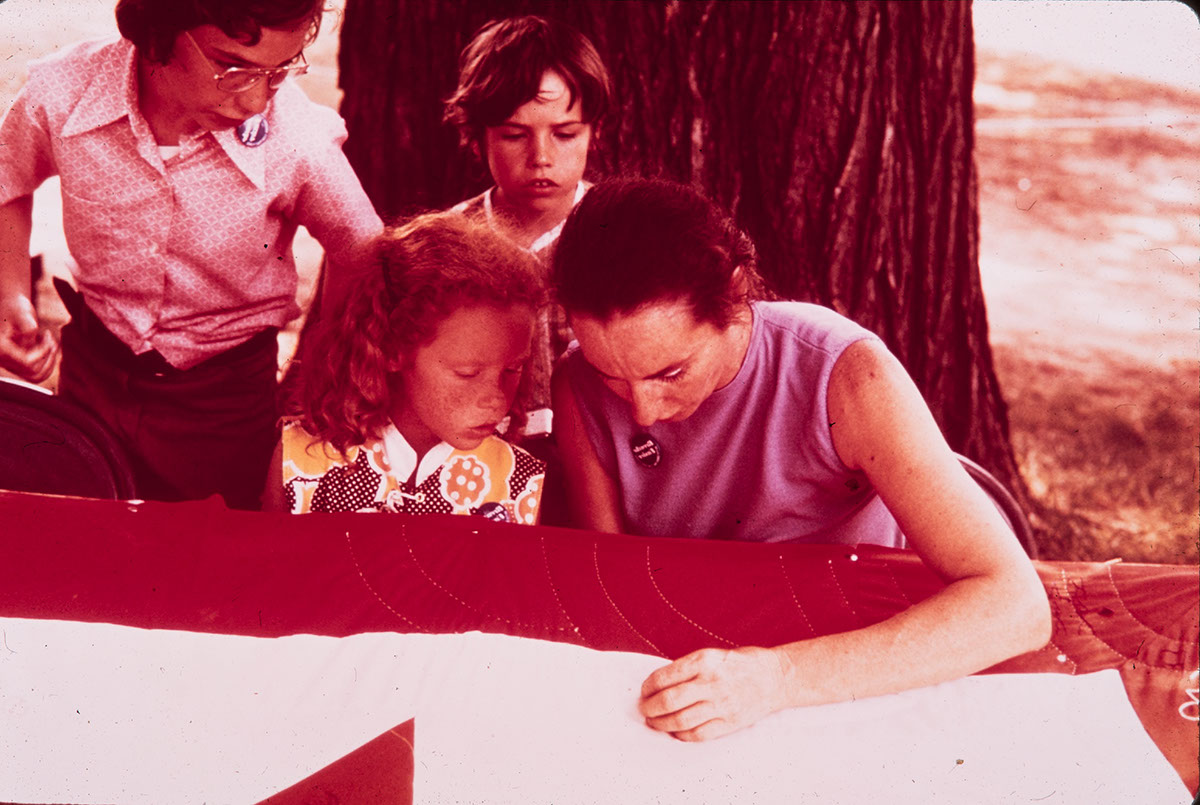"Regional America" cut across all the other sections of the Festival by looking at the assemblages of different peoples scattered across our land. In this area, therefore, visitors could see working people and children, ethnics and blacks and Native Americans brought together to celebrate not so much their individual identities but the space in which they all live together, their homeplace within the wide American land.
A region was acknowledged to be a hard thing to create on the Mall; it is an abstract made up of a thousand concrete details: the lay of the land, the slant of the sunlight, the way a person says "Good morning," the particular records on the jukeboxes in the diner, the depth of the topsoil, the smell of Sunday dinner. So in Regional America the Festival brought together the people who lived in a particular place and asked them to demonstrate the arts and the skills that make it possible to live in that place and that most powerfully characterize it. It is the sense of home that the Smithsonian sought to capture here.
June 16-20, the Northeast. The Northeast Region combines the peoples and the traditions of the Atlantic Northeast (Pennsylvania, New York, New Jersey, and Delaware) and those of New England. There were demonstrations of lobster trap making, whittling, quilting, and snowshoe making, traditional food preparation, and presentations of Anglo, French, and German American traditional music.
June 23-27, the Great Lakes. The Great Lakes region is a large area consisting of diverse peoples and traditions. Scandinavian, Eastern European, Mediterranean, and Native American music, crafts, and food demonstrations included birch bark canoe building, bread baking, and pysanky decorating. From the farming and dairy areas, skills such as shingle making and wood carving were presented, along with dairy cattle demonstrations of milking, calf feeding, and caring for livestock. Demonstrations of maritime activities included fish net making, waterfowl decoy carving, dock building, and storytelling. Blues and other transplanted styles of Southern music were also performed.
July 1-5, the South. Presentations included Alabama folk painting, traditional boat building, stitchery by Ethel Mohamed (who did the tapestry on the cover of the 1976 program book), decoy carving and painting, a Freedom Quilting Bee, pottery, and splint basket making. Regional America's presentation of Southern foodways traditions included the preparation of pecan pralines, various gumbos, crawfish, and sorghum.
July 7-11, the Upland South. Crafts presented this week included quilting, blacksmithing, stone carving, barrel making, and whittling. Vinegar pie, hominy, biscuits and gravy were made for sampling, with barbequed chicken, corn on the cob, cobbler, and barbequed beans for sale.
July 14-18, the Heartland. Craft presentations included the making of apple head dolls, corn husk dolls, tree branch dolls and spurs, wood carving, and pysanky (egg decorating.) Foodways demonstrations includes the preparation of such regional specialties as kolaches (a Bohemian fruit-filled bun), sweet braided bread, New Year cookies, cheese, and sauerkraut.
July 14-18, the Great West. Featured crafts included quilting by seven different participants, wagon wheel making, horse hair rope making, wood carving, braided and woven rug making, and the demonstration of traditional fence building styles. Preparation of foods from the Great West was demonstrated including bratzells (cookies baked over an open fire), whole wheat bread, and the canning of sauerkraut, pickles, relish, and jelly.
July 28-August 1, the Pacific Northwest. Craft presentations included fly tying and casting, snow sled making, fiddle making, a logging demonstration, weaving, whittling, net making, boat building, and paper cutting. Foodways demonstrations featured a camp cook making pancakes and sourdough bread, traditional to the logging life of the Pacific Northwest.
August 4-8, the Southwest. Visitors could see cowboy boot making, adobe making, mural painting, calf roping, saddle making, rawhide work, and soap making demonstrated as part of the presentation of the culture of the Southwest. Traditional ranch cooking was demonstrated, with chili, beans, and sourdough biscuits among the featured specialties.
Barbara LaPan Rahm was Program Coordinator; William K. McNeil was Folklorist; and Diana Parker was Assistant Program Coordinator.


